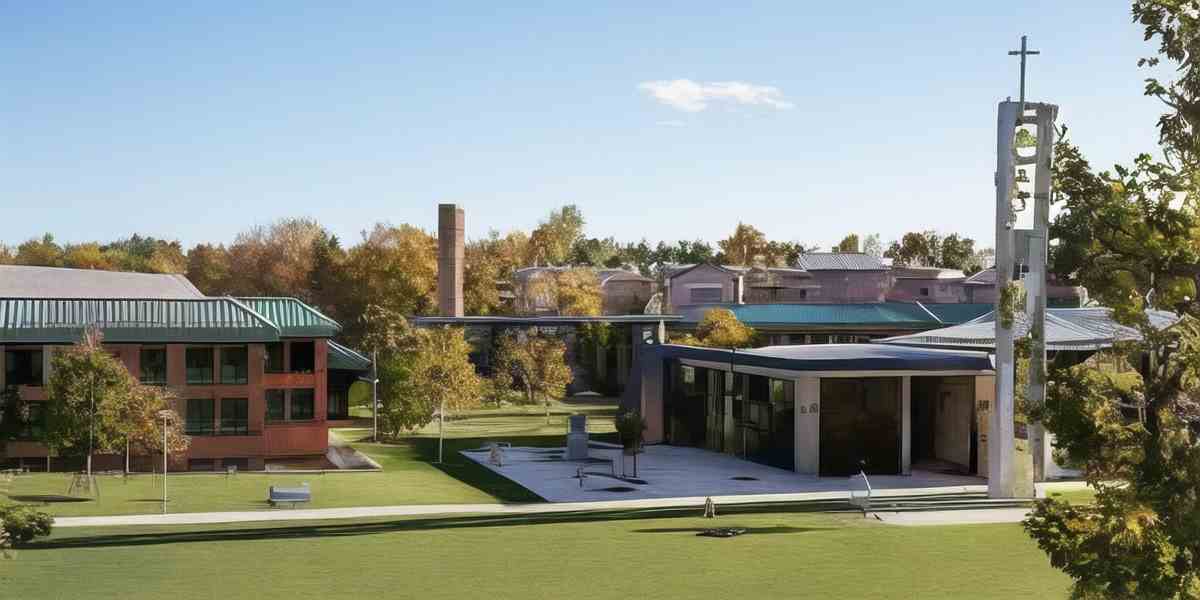Sacred Heart University
2024 USNews Best Colleges Ranking: 209(↑10) (Click for schools/majors ranking)
Abbreviation/Alias: SHU
School Characteristics: Private, non-Profit (4-Years)
Calendar systerm: Semester
Religious Affiliation: Roman Catholic
School Chief: John Petillo (President)
Website: https://www.sacredheart.edu/; Phone: 2033717999
Location: 5151 Park Ave, Fairfield, CT, 006825-1000

Sacred Heart University Important Facts
Sacred Heart University Degrees and Majors
Sacred Heart University Ranking and Admission
Sacred Heart University Admission Score Requires
*Numbers at left represent SAT/ACT submitting percentage, numbers on blue blocks represent 25%-75% admission scores
**Drag green block to check data for different years, click blue block to check scores trends
Sacred Heart University Students Diversity
Sacred Heart University Students Age Distribution
Sacred Heart University International Students Trends
Sacred Heart University Campus and Safety
Nearby Top Colleges
Campus Safety
Reference
- Sacred Heart University Official Website
- USNews Best Colleges Ranking
- USNews Bset Global Universities Ranking
- THE World University Ranking
- QS World University Ranking
- ARWU World University Ranking
- US Department of Education College Scorecard
- National Center for Education Statistics
- Forward Pathway US College Ranking Database
 Sacred Heart University Important Facts Trends
Sacred Heart University Important Facts Trends
 Sacred Heart University degrees/majors
Sacred Heart University degrees/majors
Sacred Heart University major details
*Depends on whether majors have graduates in 2022 or not, Yes / No
**Move mouse on can check deitaled graudates number, click for major detailed information
***Due to privacy policy, graduate salaries are not shown for some majors that has few gradautes
| Major | Graduate Salary | Associate | Under | Master | Doctor |
|---|---|---|---|---|---|
| Speech-Language Pathology/Pathologist. | $75,564 | ||||
| Radiologic Technology/Science - Radiographer. | $57,618-$70,947 | ||||
| Physician Assistant. | $57,618-$70,947 | ||||
| Allied Health Diagnostic, Intervention, and Treatment Professions, Other. | $57,618-$70,947 | ||||
| Occupational Therapy/Therapist. | $76,229-$81,247 | ||||
| Physical Therapy/Therapist. | $76,229-$81,247 | ||||
| Medical Informatics. | - | ||||
| Registered Nursing/Registered Nurse. | $75,659-$105,141 | ||||
| Nursing Administration. | $75,659-$105,141 | ||||
| Family Practice Nurse/Nursing. | $75,659-$105,141 | ||||
| Nursing Science. | $75,659-$105,141 |
| Major | Graduate Salary | Associate | Under | Master | Doctor |
|---|---|---|---|---|---|
| Business Administration and Management, General. | $60,131-$97,602 | ||||
| Accounting. | $77,390-$93,859 | ||||
| Finance, General. | $74,953 | ||||
| Hotel/Motel Administration/Management. | - | ||||
| Human Resources Development. | - | ||||
| Business Statistics. | - | ||||
| Management Sciences and Quantitative Methods, Other. | - | ||||
| Marketing/Marketing Management, General. | $64,103 | ||||
| Fashion Merchandising. | - |
| Major | Graduate Salary | Associate | Under | Master | Doctor |
|---|---|---|---|---|---|
| Biology/Biological Sciences, General. | $52,614 | ||||
| Biochemistry. | - | ||||
| Cell/Cellular and Molecular Biology. | - | ||||
| Exercise Physiology and Kinesiology. | - | ||||
| Marine Biology and Biological Oceanography. | - | ||||
| Epidemiology and Biostatistics. | - | ||||
| Neuroscience. | - |
| Major | Graduate Salary | Associate | Under | Master | Doctor |
|---|---|---|---|---|---|
| Public Administration. | - | ||||
| Social Work. | $47,179 |
| Major | Graduate Salary | Associate | Under | Master | Doctor |
|---|---|---|---|---|---|
| Education, General. | $57,021 | ||||
| Curriculum and Instruction. | - |
| Major | Graduate Salary | Associate | Under | Master | Doctor |
|---|---|---|---|---|---|
| Research and Experimental Psychology, Other. | - | ||||
| Psychology, Other. | $61,275 |
| Major | Graduate Salary | Associate | Under | Master | Doctor |
|---|---|---|---|---|---|
| Communication, General. | $56,438-$61,393 | ||||
| Speech Communication and Rhetoric. | $56,438-$61,393 | ||||
| Mass Communication/Media Studies. | $56,438-$61,393 | ||||
| Digital Communication and Media/Multimedia. | - | ||||
| Public Relations, Advertising, and Applied Communication. | $56,837 | ||||
| Public Relations/Image Management. | $56,837 | ||||
| Sports Communication. | $56,837 | ||||
| Communication, Journalism, and Related Programs, Other. | - |
| Major | Graduate Salary | Associate | Under | Master | Doctor |
|---|---|---|---|---|---|
| Computer and Information Sciences, General. | $72,115 | ||||
| Information Technology. | $72,115 | ||||
| Web Page, Digital/Multimedia and Information Resources Design. | - |
| Major | Graduate Salary | Associate | Under | Master | Doctor |
|---|---|---|---|---|---|
| Criminal Justice/Law Enforcement Administration. | $53,931 | ||||
| Criminal Justice/Safety Studies. | $53,931 | ||||
| Cyber/Computer Forensics and Counterterrorism. | - |
| Major | Graduate Salary | Associate | Under | Master | Doctor |
|---|---|---|---|---|---|
| Multi-/Interdisciplinary Studies, General. | - | ||||
| International/Globalization Studies. | - |
| Major | Graduate Salary | Associate | Under | Master | Doctor |
|---|---|---|---|---|---|
| Economics, General. | $84,096 | ||||
| Political Science and Government, General. | - | ||||
| Sociology, General. | - |
| Major | Graduate Salary | Associate | Under | Master | Doctor |
|---|---|---|---|---|---|
| General Studies. | - |
| Major | Graduate Salary | Associate | Under | Master | Doctor |
|---|---|---|---|---|---|
| Mathematics, General. | - | ||||
| Financial Mathematics. | - |
| Major | Graduate Salary | Associate | Under | Master | Doctor |
|---|---|---|---|---|---|
| Game and Interactive Media Design. | - | ||||
| Drama and Dramatics/Theatre Arts, General. | - | ||||
| Cinematography and Film/Video Production. | - | ||||
| Art/Art Studies, General. | - |
| Major | Graduate Salary | Associate | Under | Master | Doctor |
|---|---|---|---|---|---|
| History, General. | - |
| Major | Graduate Salary | Associate | Under | Master | Doctor |
|---|---|---|---|---|---|
| English Language and Literature, General. | $49,152 |
| Major | Graduate Salary | Associate | Under | Master | Doctor |
|---|---|---|---|---|---|
| Chemistry, General. | - |
| Major | Graduate Salary | Associate | Under | Master | Doctor |
|---|---|---|---|---|---|
| Computer Engineering, General. | - | ||||
| Electrical and Electronics Engineering. | - |
| Major | Graduate Salary | Associate | Under | Master | Doctor |
|---|---|---|---|---|---|
| Philosophy. | - | ||||
| Religion/Religious Studies. | - |
 Sacred Heart University Schools/Majors Ranking
Sacred Heart University Schools/Majors Ranking
Under Ranking (2024)
*Rankings have been updated to 2025USNews schools/majors ranking, rankings are for reference only
*numbers in bracket represent rankings change compare to last version
 Sacred Heart University Varsity Athletes
Sacred Heart University Varsity Athletes
| NCAA Division I-FCS | MEN | WOMEN |
|---|---|---|
| Track and Field and Cross Country (combined) | 150 | 224 |
| Football | 159 | - |
| Lacrosse | 57 | 38 |
| Wrestling | 73 | 8 |
| Soccer | 30 | 47 |
| Ice Hockey | 31 | 29 |
| Rowing | - | 48 |
| Volleyball | 26 | 20 |
| Baseball | 43 | - |
| Fencing | 18 | 19 |
| Swimming and Diving (combined) | - | 37 |
| Basketball | 18 | 17 |
| Equestrian | - | 33 |
| Softball | - | 32 |
| Golf | 14 | 14 |
| Field Hockey | - | 28 |
| Tennis | 12 | 15 |
| Other Sports | - | 25 |
| Bowling | - | 24 |
| NCAA Division I-FCS | MEN | WOMEN |
|---|---|---|
| All Track Combined | 121 | 194 |
| Football | 113 | - |
| Lacrosse | 52 | 36 |
| Soccer | 28 | 43 |
| Ice Hockey | 29 | 31 |
| Wrestling | 49 | - |
| Rowing | - | 47 |
| Baseball | 42 | - |
| Volleyball | 20 | 20 |
| Equestrian | - | 39 |
| Swimming and Diving | - | 34 |
| Fencing | 18 | 16 |
| Basketball | 16 | 17 |
| Softball | - | 28 |
| Other Sports | - | 27 |
| Tennis | 11 | 14 |
| Field Hockey | - | 25 |
| Golf | 10 | 10 |
| Bowling | - | 19 |
| NCAA Division I-FCS | MEN | WOMEN |
|---|---|---|
| All Track Combined | 111 | 176 |
| Football | 128 | - |
| Lacrosse | 45 | 30 |
| Soccer | 25 | 41 |
| Ice Hockey | 30 | 30 |
| Wrestling | 52 | - |
| Rowing | - | 40 |
| Baseball | 38 | - |
| Basketball | 14 | 21 |
| Equestrian | - | 34 |
| Volleyball | 15 | 18 |
| Swimming and Diving | - | 27 |
| Other Sports | - | 27 |
| Fencing | 17 | 9 |
| Field Hockey | - | 24 |
| Softball | - | 21 |
| Tennis | 9 | 11 |
| Golf | 8 | 6 |
| Bowling | - | 14 |

 Sacred Heart University Important Facts Trends
Sacred Heart University Important Facts Trends
















































































































































































































































































































































































































































